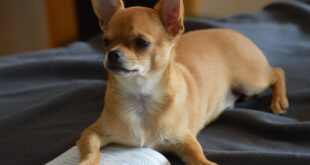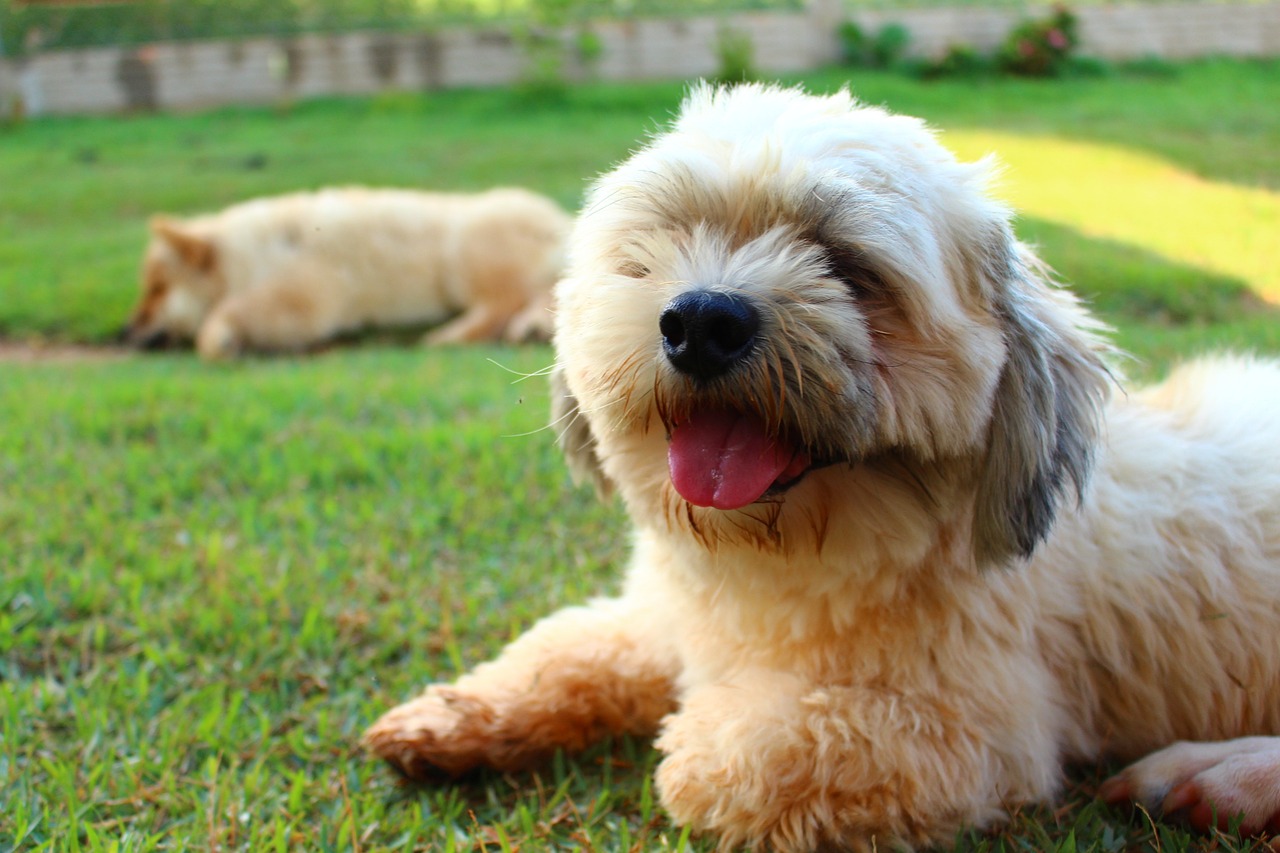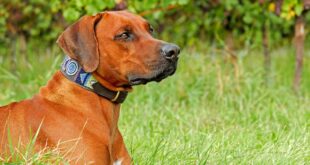[ad_1]
The Lhasa Apso, with its distinct lengthy coat and aristocratic demeanor, is a breed that hails from the Tibetan mountains. Initially bred as a sentinel canine for Tibetan monasteries, the Lhasa Apso has a sturdy protecting intuition. But simply how sturdy is a Lhasa Apso’s chew? And in the event that they had been to chew, would it not harm? This article delves deep into the sector of Lhasa Apso chew dynamics.
How Do We Measure the Bite Force of a Lhasa Apso?
Bite pressure in canines is generally measured in kilos in step with sq. inch (PSI). This metric offers a quantitative price to the quantity of drive a canine can exert with its jaws. While there are usual figures for lots of breeds, figuring out a precise PSI for each breed, together with the Lhasa Apso, can also be difficult because of person variances and the restricted quantity of research thinking about explicit breeds.
Estimated Bite Force of a Lhasa Apso
Given the Lhasa Apso’s dimension and anatomy, their chew pressure is significantly lower than better breeds. While a precise PSI for the Lhasa Apso isn’t universally agreed upon, it’s affordable to suppose that it falls in keeping with different small breeds, which is significantly less than the chew forces recorded for better canines.
Anatomy of the Lhasa Apso’s Jaw
The Lhasa Apso’s jaw construction and tooth are very similar to different small canine breeds. They have a set of 42 grownup tooth comprising incisors, canine, premolars, and molars. While those tooth are sharp and will definitely pierce the outside, the Lhasa Apso’s jaw doesn’t have the ability that better breeds possess. Its number one serve as is for greedy and chewing slightly than exerting important pressure.
Does a Lhasa Apso’s Bite Hurt?
If a Lhasa Apso had been to chew, the feeling would rely on a number of components: the canine’s goal, the bitten house’s sensitivity, and the chew’s length. Given the Lhasa Apso’s dimension and jaw power, their chew is much less potent than that of better breeds. However, a chew can nonetheless destroy the outside, reason ache, and result in doable infections if no longer correctly handled.
The Protective Nature of the Lhasa Apso
Historically, the Lhasa Apso used to be bred to be an alert and protecting sentinel in Tibetan monasteries. This heritage way the breed can also be cautious of strangers and probably protecting of its circle of relatives and territory. Understanding this habits is a very powerful when deciphering why a Lhasa Apso may chew. It’s no longer essentially out of malice, however slightly an ingrained protecting intuition.
Training Your Lhasa Apso to Minimize Biting Risks
Effective coaching from a younger age is important to make certain that a Lhasa Apso doesn’t hotel to biting:
- Early Socialization: This is a very powerful for Lhasa Apsos. Exposing them to quite a lot of folks, puts, and stories can lend a hand cut back their inherent wariness of strangers.
- Positive Reinforcement: Rewarding just right habits slightly than punishing unfavourable habits is the important thing. It creates a sure finding out surroundings for the Lhasa Apso.
- Teach Bite Inhibition: If a Lhasa Apso pet is susceptible to nipping, instructing them chew inhibition can keep an eye on this habits as they mature.
Conclusion
The Lhasa Apso, whilst small in stature, has a sturdy persona and protecting intuition. Their chew pressure isn’t some of the most powerful within the dog global, however it might nonetheless reason discomfort in the event that they make a decision to chew. Proper figuring out, coaching, and socialization of the Lhasa Apso are crucial to verify harmonious interactions and decrease any chance of biting.
Frequently Asked Questions About Lhasa Apso Bites
1. Are Lhasa Apsos naturally competitive biters?
No, Lhasa Apsos don’t seem to be inherently competitive. However, they had been bred as sentinel canines in Tibet, because of this they’ve a sturdy protecting intuition. Proper socialization and coaching are crucial to verify they don’t transform overly protecting or competitive.
2. Why does my Lhasa Apso pet nip right through play?
Nipping right through play is a commonplace habits in lots of pups, together with Lhasa Apsos. It’s a approach they discover their global and have interaction in playful habits. Teaching them chew inhibition early on can lend a hand set up and cut back this habits as they develop.
three. How can I save you my Lhasa Apso from biting strangers?
Early and constant socialization is the important thing. Exposing your Lhasa Apso to quite a lot of folks, environments, and eventualities can lend a hand them transform extra familiar with strangers and cut back their protecting instincts in unfamiliar eventualities.
four. What will have to I do if my Lhasa Apso bites anyone?
Firstly, ensure that the protection of everybody concerned. Secure your Lhasa Apso, test the chew’s severity, and search clinical consideration if essential. Then, review the cases resulting in the chew and imagine consulting a skilled canine instructor or behaviorist to deal with any behavioral issues.
five. How sturdy is a Lhasa Apso’s chew in comparison to different breeds?
The Lhasa Apso, being a small breed, doesn’t have as sturdy a chew pressure as better breeds. While a precise dimension isn’t broadly agreed upon, their chew is generally in keeping with different small breeds and is significantly weaker than better canines.
6. Are Lhasa Apsos extra susceptible to biting than different breeds?
Not essentially. While Lhasa Apsos can also be cautious of strangers because of their historic position as sentinel canines, with right kind coaching and socialization, they shouldn’t be extra susceptible to biting than some other breed.
7. My Lhasa Apso turns out to protect its meals and toys aggressively. Is this standard?
Resource guarding can happen in lots of breeds, together with Lhasa Apsos. It’s crucial to deal with this habits early on thru coaching, instructing instructions like “leave it” and “drop it,” and making sure that your canine feels safe right through feeding occasions.
eight. Why does my Lhasa Apso growl when approached via unfamiliar folks?
Given their historic position as guard canines in monasteries, Lhasa Apsos can also be naturally cautious of strangers. Growling can also be a take-heed call or an expression of discomfort. Proper coaching and socialization can lend a hand them transform extra at ease round new folks.
nine. Is neutering or spaying my Lhasa Apso efficient in lowering biting dispositions?
While neutering or spaying can cut back some competitive dispositions in canines, it’s no longer a assured answer for biting. Proper coaching and socialization stay among the finest methods to control and save you competitive behaviors.
10. How can I educate my Lhasa Apso chew inhibition?
Engaging in managed play periods, the usage of toys to redirect biting habits, and providing sure reinforcement when your Lhasa Apso makes the precise alternatives are efficient methods. If the nipping or biting persists, imagine looking for lend a hand from a skilled canine instructor.
[ad_2]




